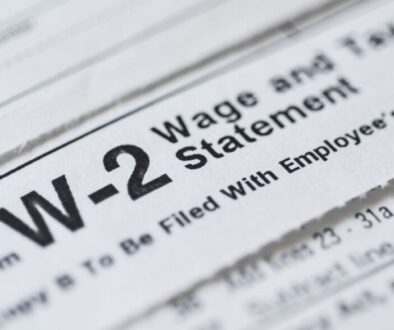How Much are Taxes on IRA Withdrawals
Table of Contents
How Much are Taxes on IRA Withdrawals
When it comes to retirement savings, Individual Retirement Accounts (IRAs) are a popular choice for many individuals. However, understanding the tax implications of withdrawing funds from these accounts is crucial for effective financial planning.
This article delves into the various aspects of IRA withdrawals, including tax rates, penalties, and strategies to seek to minimize tax liabilities.
What is an IRA?
An Individual Retirement Account (IRA) is a tax-advantaged savings vehicle designed to help individuals save for retirement. There are several types of IRAs, including Traditional IRAs and Roth IRAs, each with its own set of rules regarding contributions, withdrawals, and taxes.
Types of IRAs
- Traditional IRA: Contributions are typically tax-deductible, and taxes are paid upon withdrawal during retirement.
- Roth IRA: Contributions are made with after-tax dollars, allowing for tax-free withdrawals in retirement, provided certain conditions are met.
Contribution Limits
For both Traditional and Roth IRAs, the IRS sets annual contribution limits. As of 2025, individuals under 50 can contribute up to $7,000, while those aged 50 and above can contribute an additional $1,000 as a catch-up contribution.
Tax Implications of IRA Withdrawals
Understanding how taxes apply to IRA withdrawals is essential for effective retirement planning. The tax treatment of withdrawals largely depends on the type of IRA and the individual’s tax situation.
Traditional IRA Withdrawals
When you withdraw funds from a Traditional IRA, the amount is generally considered taxable income. This means that you will owe income tax on the withdrawn amount at your ordinary income tax rate.
Tax Rates
The tax rate on IRA withdrawals can vary based on your total taxable income for the year. The IRS uses a progressive tax system, meaning that higher income levels are taxed at higher rates.
Early Withdrawals
If you withdraw funds from your Traditional IRA before reaching the age of 59½, you may incur an additional 10% early withdrawal penalty on top of regular income taxes. However, there are exceptions to this rule, such as for first-time home purchases, qualified education expenses, or certain medical expenses.
Roth IRA Withdrawals
Roth IRA withdrawals have different tax implications compared to Traditional IRAs. Since contributions to a Roth IRA are made with after-tax dollars, qualified withdrawals are tax-free.
Qualified Withdrawals
To qualify for tax-free withdrawals from a Roth IRA, the account must have been open for at least five years, and the account holder must be at least 59½ years old. Additionally, withdrawals made for certain circumstances, such as disability or first-time home purchases, may also qualify for tax-free treatment.
Penalties for Early Withdrawals
Both Traditional and Roth IRAs impose penalties for early withdrawals, although the rules differ between the two.
Traditional IRA Penalties
As mentioned earlier, withdrawing funds from a Traditional IRA before age 59½ typically incurs a 10% penalty in addition to regular income taxes. This penalty is designed to discourage individuals from using their retirement savings for non-retirement expenses.
Roth IRA Penalties
For Roth IRAs, the rules surrounding early withdrawals are more lenient. While contributions can be withdrawn at any time without penalty, earnings are subject to the 10% penalty if withdrawn before age 59½ and before the account has been open for five years.
Strategies to Minimize Taxes on IRA Withdrawals
To effectively manage the tax implications of IRA withdrawals, consider the following strategies:
1. Timing Withdrawals
Timing your withdrawals can significantly impact your tax liability. If you anticipate being in a lower tax bracket in the future, it may be beneficial to delay withdrawals until then.
2. Convert to a Roth IRA
Converting a Traditional IRA to a Roth IRA can be a strategic move, especially if you expect your tax rate to increase in the future. While you will owe taxes on the converted amount in the year of conversion, future withdrawals from the Roth IRA will be tax-free.
3. Use Tax-Advantaged Accounts
Consider utilizing other tax-advantaged accounts, such as Health Savings Accounts (HSAs) or Flexible Spending Accounts (FSAs), to cover medical expenses or other qualified costs, allowing you to preserve your IRA funds for retirement.
Reporting IRA Withdrawals on Your Tax Return
When it comes time to file your taxes, it’s essential to accurately report any IRA withdrawals. Here’s how to do it:
1. Form 1099-R
If you take a distribution from your IRA, you will receive Form 1099-R from your financial institution. This form will indicate the amount withdrawn and whether any taxes were withheld.
2. Reporting on Your Tax Return
You must report the distribution on your tax return, typically on Form 1040. The amount will be included in your total taxable income, and you will pay taxes based on your tax bracket.
Common Questions About IRA Withdrawals
Can I withdraw from my IRA at any time?
Yes, you can withdraw from your IRA at any time; however, the tax implications and potential penalties will depend on the type of IRA and your age.
What happens if I don’t withdraw my required minimum distribution (RMD)?
For Traditional IRAs, once you reach age 72, you are required to take minimum distributions each year. Failing to do so can result in a hefty penalty of 50% on the amount you were supposed to withdraw.
Are there any exceptions to the early withdrawal penalty?
Yes, there are several exceptions to the early withdrawal penalty for Traditional IRAs, including qualified education expenses, first-time home purchases, and certain medical expenses.
Conclusion
Understanding the tax implications of IRA withdrawals is crucial for effective retirement planning. By being aware of the differences between Traditional and Roth IRAs, the penalties for early withdrawals, and strategies to seek to minimize tax liabilities, individuals can make informed decisions that align with their financial goals. Always consult with a tax professional or financial advisor to help ensure you are making the best choices for your unique situation.




